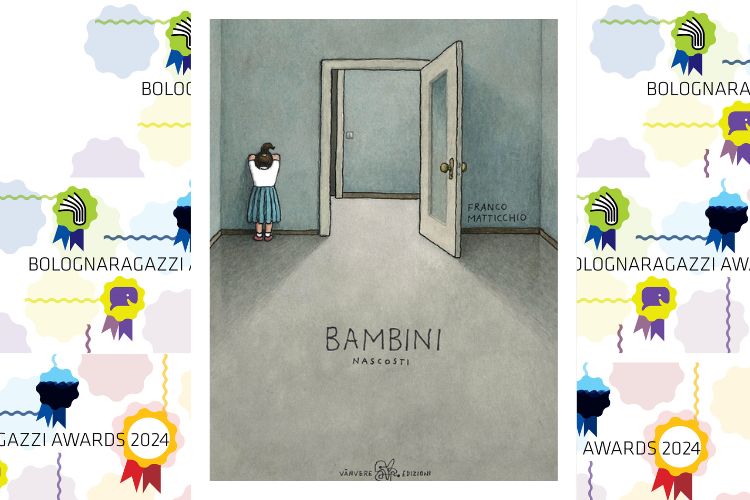
Get the latest updates in your inbox and sign up for more info!
Crafted in soft pastel watercolours, even if this compact paperback strives to remain inconspicuous, it cannot but stand out as remarkable. Like the hidden children it mentions in its title and reveals within its pages, it subtly beckons to be found.
Each double-page spread presents a list of names – sometimes just one, at other times a few or even many – corresponding to the number of children depicted in the accompanying illustration, who are only visible to those who look closely. Ingeniously integrated into landscapes, streets, rooms, or corners of homes, the children hide within, behind, or beneath prominent objects. They emerge/allow us a glimpse only if we observe closely. This process mirrors the care childhood inherently requires, whether that be a child seeking attention without intruding, desiring recognition, or craving solitude in their own engrossed world, heedless of our actions or plans for them.
The book is designed so that reading its words aloud mimics the morning roll call of a school, with each child responding “here”. And yet, paradoxically, the illustrations underscore the children’s absence, their not being present; or rather, not being where we expect them to be, urging us to actively seek them out. The implication is that children deserve deliberate effort on our part not to overlook them. We must up our game, enhance our perception, pause, and recognize them for who and where they truly are.
Matticchio’s page after page of consistently hidden children tackles the fundamental invisibility of childhood, noting that it exists unnoticed alongside us, ghost-like in an adult-centric world that rarely adopts children’s viewpoint.
The book’s depiction of childhood invisibility is an unresolved contradiction: it remains unclear whether, for the children, this invisibility is a playful game, an existential condition, or a means of self-protection from adults. Imbued with fittingly subtle irony and poignant melancholy, the book challenges readers, cautioning us not to intrude as we carefully approach hidden corners where childhood dwells in concealment.
Just as children delight in playing hide and seek, the book draws the reader into a similar game, urging us to be mindful of a phase of life that we risk overlooking, misunderstanding, or overwhelming until it is gone.
Capturing the philosophical and poetical essence of childhood and highlighting adults’ limited view, the work portrays this period of life as a liminal state between visibility and invisibility, acknowledging childhood’s fragile presence in the world and its tendency to retreat behind a living-room curtain, whether in play or escape.

Matticchio’s page after page of consistently hidden children tackles the fundamental invisibility of childhood
Associate Professor of Children’s Literature at Bologna University, Giorgia Grilli is a co-founder of the Department of Education’s Children’s Literature Research Centre (CRLI). She has authored and curated books and critical essays on children’s literature, several of which translated and published in English. Giorgia has also organized and spoken at many international children’s literature conferences, and in 2015 received the Children’s Literature Association’s ‘Distinguished Scholar’ Award. She is the Principal Investigator of the non-fiction picturebook research project promoted by Bologna University in partnership with Bologna Children’s Book Fair, which gave life to G.Grilli (ed) Non-Fiction Picturebooks. Sharing Knowledge as an Aesthetic Experience, ETS, 2020. Her numerous books include the recent title Di cosa parlano i libri per bambini. La letteratura per l'infanzia come critica radicale, Donzelli, 2021.